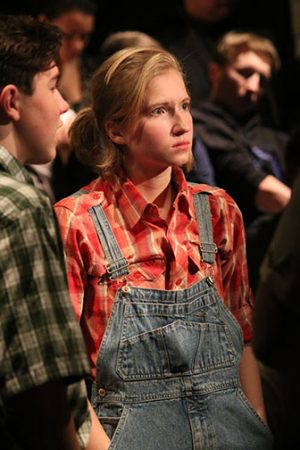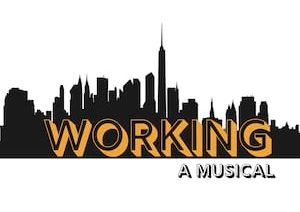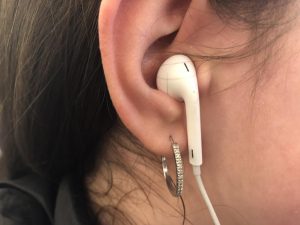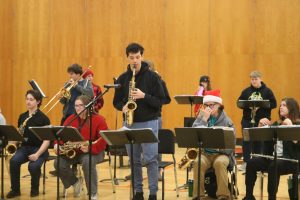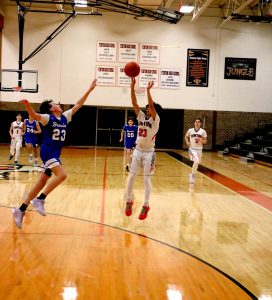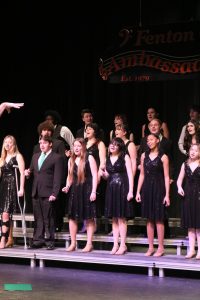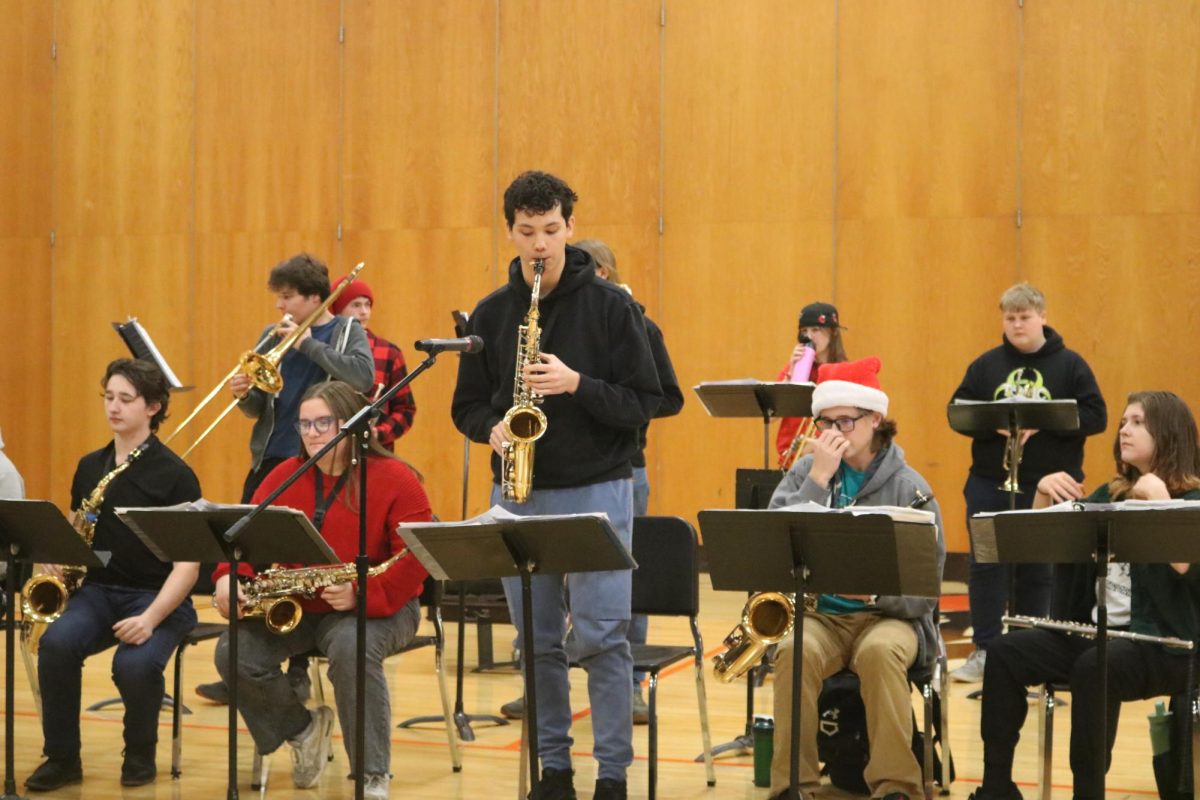Arts classes undergo modifications to accommodate school shutdown
April 7, 2020
When reported cases of the COVID-19 virus jumped from two to 20 overnight, Governor Gretchen Whitmer made the decision to close schools in Michigan, requesting that they find online alternatives for education. However, for arts classes whose curriculums largely depend on in-person instruction, this presents a multitude of challenges.
“I am having students draw in stages, take a picture of it and upload it to the assignment in the Google Classroom,” art teacher Tracey Jambeck said. “I then make suggestions on what to fix or tweak a little and let them know what part of the piece is strong. If they have other supplies available at home, they can use them. If they have nothing, just a regular pencil and printing paper will work.”
In order to answer questions from students, Jambeck has made demonstration videos that feature hand drawn tutorials for her students to follow from home. This method has reportedly taken up twice as much of her time, especially with the obstacles brought by technology.
“Students have a lot of questions and I recognize that this is hard for them, so I am trying to get back with them as fast as I can,” Jambeck said. “I often sketch out real quick, little things to show what I am talking about for personal questions that relate to their own project. I know we can post videos, but I am not quite comfortable with that yet. This is a learning curve for teachers too; I am learning things I have never done before.”
For choir students, piano recordings of the individual parts students are responsible for learning have been posted on Google Classroom for them to sing along to. While this does not offer a way to blend the different stylistic interpretations of each vocalist, it provides a way for students to become familiar with the music while at home.
“What’s unique about the arts—especially the performing arts- is that it is reliant on practicing together, in person,” junior Chris LaFave, who is an ambassador vocalist, said. “Human interaction is important for choir because of blend and balance. It’s not about individual singing talent, but about sounding good and sounding uniform. It is much more effective if you are practicing together. The shutdown seems to halt all progress because when we aren’t together, we aren’t getting much done. One thing that’s great about the Ambassadors is that when we finally get back together, I have no doubt we will be able to sort that stuff out almost instinctively, with some help from Mr. Wright.”
As a percussion student, sophomore Mikayla Maher is responsible for maintaining the beat and tempo of a piece for the rest of the ensemble. However, Maher is also dependent on the ensemble for finding her place in a piece, namely, accounting for creative choices an ensemble makes.
“Mr. Conaton is having us film ourselves doing a song and a few practices on Friday, and then another video showing growth next Friday,” Maher said. “I find it more difficult to have band online; there’s not much ‘growing’ involved considering there’s no band to listen to, no teacher or upperclassmen there to give you criticism. It’s good to have peers around so that you can help each other and bounce ideas off of one another.”
Publications classes face another obstacle brought by the shutdown: approaching deadlines. The limited access to design platforms, such as Monarch, Adobe Spark and Photoshop, as well as the strain on collaborative workplaces can make it difficult for publications staff members to complete their work.
“All editors have Yearbook Avenue access,” junior Taylor Wire said. “From there we can get into Monarch, where all of the pages for the yearbook are. I did have to learn how to download pictures and place them on my page; I just called one of the photo editors and got lucky that they answered and could teach me. Now that we’re not in class, it is quite challenging to contact someone if you need help. It takes a lot longer to reach out to a person.”
For some art students, the shutdown has given them the opportunity to get into a more personalized mindset for their art.
“Mrs. McDowell told us to push ourselves with our art, take time on our pieces and do more than we were originally assigned, if possible,” Maher, who participates in art in addition to band, said. “I find it somewhat easier to focus since I have more time on my hands to work on a piece. Of course, finding art supplies is a little more difficult.”
While the schedule flexibility offered by online classes can have advantages, students may struggle with motivation or distractions.
“It’s definitely harder to have online school from a self discipline standpoint,” LaFave said. “When we have school, it’s neatly formatted for you to work on this subject now and this subject later. In online school I get to choose when I work on school, and sometimes it’s hard to get myself to work on schoolwork at all.”
As the shutdown was recently prolonged, arts teachers will continue to find plans to assure students exhibit artistic growth while they are at home. On Thursday, Whitmer will make the decision as to whether or not Michigan schools will be closed for the rest of the year.


